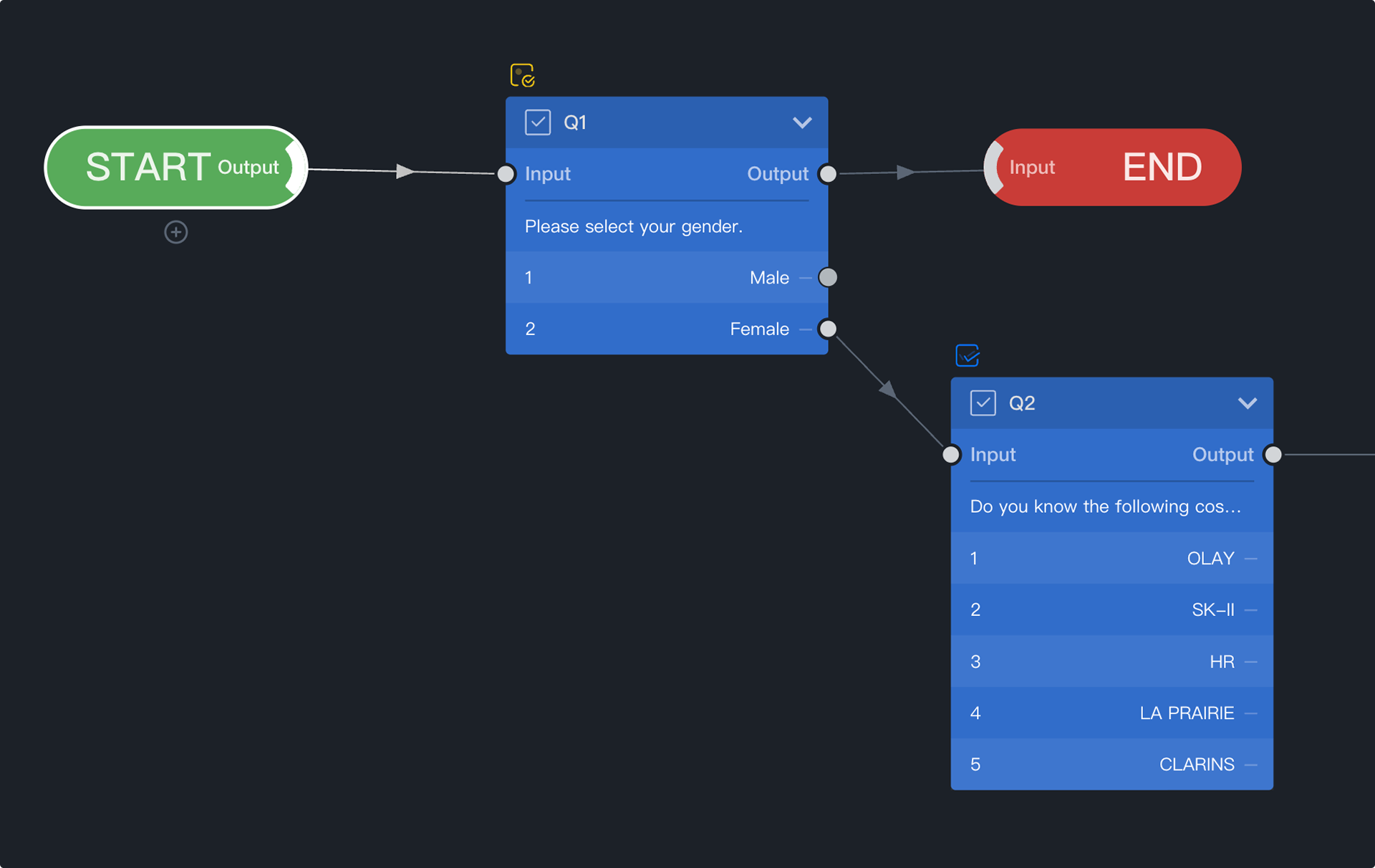Global General Settings - Test
Global General Settings - Test
Test
The system supports the generation of test data. By default, test data is generated in a completely random manner. However, unique test data generation strategies can also be set for each question within the Testing Panel.
Suppose there is a survey questionnaire about women's cosmetics, with a portion of the questions shown in the image below.

When the respondent is a male, the questionnaire should be terminated immediately.
When using the test data tool to generate test data, for the gender question, the test tool would default to randomly selecting either male or female. However, we only want to generate data for females because male data is not needed and does not aid in previewing our data model.
At this point, we click on the ➕ to the right of the male option and input a weight value in the selection derivation, setting the selection probability weight for the male option to 0.

After this configuration, when generating test data, this question will never generate data for males.
The above is just a simple example. In fact, the testing configuration allows for very complex and specialized setups.
-
Selection Derivation: This is used to control the probability of a certain option being selected when deriving data. By default, if no configurations are set for any options, all options have an equal probability of being selected.
- If a configuration is added to an option and its probability weight in the selection derivation is set to 0, it means that this option will never be selected. Alternatively, if a non-zero weight is set for one option, all other options that are not configured will default to not being selected, unless they are also configured.
- If non-zero probability weights are set for certain options in the selection derivation, the selection probability for these options is calculated as: their individual probability weight divided by the total probability weight.
- An option can have multiple configurations added, and the final probability weight is equal to the sum of the probability weights of these configurations.
-
Input Configuration: This is used to control the content that is input for a certain option when deriving data. When no configurations are present, test data is generated according to the following principles:
- If the input field is completely open, random, meaningless characters will be input.
- If the input fields have input validation functions configured, such as integers, decimals, dates, or automatic filling, random content that meets these requirements will be generated.
Input configurations can also be customized for more granular control. For example, you can input all possible candidate data content that you want to appear in the generated test data in the input field configuration, with each content separated by an English comma. For example, "BMW, Mercedes-Benz, Audi". When generating data, this option will only be filled with one of these three brands, and the probability is the same for each.
If you want to control the weight of certain candidate input content to be higher than others, you can annotate the weight with half-width parentheses. For example, "BMW(2), Mercedes-Benz(1), Audi(1)", then when generating test data, BMW has a 50% probability of being input, while Mercedes-Benz and Audi have a 25% probability each.
For selection-type options, you can add selection derivation configurations. For input-type options, you can add input derivation configurations. For options that can both select and input, both types of configurations can be added.
Test Configuration
Limit Maximum Selected Derivation Count
This limits the maximum number of selections that can be made in the answer.
Set Activation Conditions
By default, every derivation configuration is activated once added. Activation conditions can be set in a similar way to logical settings to dynamically control whether a certain derivation configuration is activated. For example, the activation of a derivation configuration can be determined based on the answer to a previous question. When a derivation configuration is not activated, it will not affect the generation of test data.